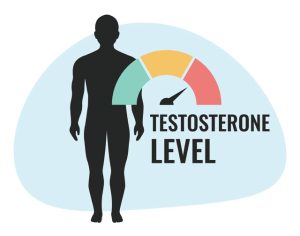Based on the prognoses of the American Cancer Society, more than 288,000 new cases of prostate gland cancer will be diagnosedthroughout 2023. This type of cancer is ranked second most common in males and fourth overall. One of the methods to treat this disease is going for a prostatectomy. This surgical procedure aims to remove the prostate gland and stop the spread of malignant cells. Such treatment can also be applied to patients with a severe flow of benign prostatic hyperplasia.
Types of Prostatectomy
Depending on the severity of your condition, the type of surgery may vary. Below you’ll find the options available.
Radical Prostatectomy
When a man is diagnosed with prostate cancer localized within the organ with no metastases, the best treatment solution for such a patient is radical prostatectomy. This is a major surgery performed by a qualified urologist-surgeon. The goal of the procedure is to remove the entire gland as well as the lymph nodes surrounding it and other nearby tissues that may be affected by malignant cells. Seminal vesicles are dissected too, which means a man becomes infertile as they can no longer ejaculate semen.
Laparoscopic Prostatectomy
Using laparoscopic tools for prostatectomy allows for reducing the post-surgery recovery period, minimizing blood loss during the operation, and diminishing pain sensations afterward. Using this surgical method, a doctor makes two or more small cuts in the male lower abdomen and removes the prostate gland using special tools. All this is done under the control of a tiny camera.
The American Cancer Society claims the effectiveness of laparoscopic surgery is similar to that of open operation if done by an experienced healthcare professional.
Robotic Prostatectomy
If your clinic has this kind of equipment and a surgeon with the needed skills, you can opt for a robotic prostatectomy. This method involves making five or six small cuts in the abdominal wall, so the blood loss is minimal and the recovery period is short.
The surgeon performing the operation uses a special console to manipulate the instruments attached to a robot (computer-assisted mechanic device). How does it help the surgery? The use of robots allows for enhancing the precision of each move of the surgeon, which makes the surgery safer.
Preparation for Prostatectomy
Prostatectomy surgery requires some time for preparation. Like any other surgical intervention, it bears some health risks, especially for people with chronic medical conditions. To ensure the procedure is safe for you, your healthcare provider will send you for several tests, including:
- blood test;
- blood sugar test;
- tests measuring your urine flow;
- cystoscopy (a medical procedure that uses a cystoscope to look at the urethra and bladder from the inside);
- rectal examination of prostate size or rectal ultrasound.
The list may be expanded depending on the health conditions you have. Aside from these, you will also need to discuss certain things about your lifestyle with your doctor. For instance, it’s worth mentioning that you take some medicines, especially if they are blood thinners like warfarin or nonsteroidal anti-inflammatory drugs such as ibuprofen, aspirin, and others. It’s likely that you’ll have to cut your daily dose of those meds or stop taking them. This should be done for safety reasons, as their intake may provoke significant blood loss during surgery. Your healthcare provider will also need to know if you are allergic to any medications.
You shouldn’t eat or drink anything for at least 12 hours before the planned surgery. If you need to take any meds, discuss this with your doctor. Taking into account the sight of surgery, you’ll have to ensure your bowels are clear. You’ll be given a kit to give yourself an enema. Follow the instructions to make it right.
Try to keep calm and trust your doctor.
The Prostatectomy Procedure

It always feels better when you know what to expect from surgery. So here is a detailed, step-by-step plan for prostatectomy.
Anesthesia
Before you get anesthesia, you’ll be tested for any hypersensitivity reactions to the medicines used in the sedating combination. If there’s no reaction, you’ll receive your anesthesia intravenously. In radical prostatectomy, only general anesthesia is used as this is a major surgery, which may last from two to four hours.
Removal of the Prostate Gland
Depending on the type of surgery you have (open, laparoscopic, or robotic), your doctor will make either one large or several small incisions on your lower abdomen. Then the surgeon will carefully dissect the gland and the surrounding tissues while separating the blood vessels and nerves. Once this is done, the prostate will be removed.
It is likely that the doctor will remove the gland in small sections, especially in laparoscopic and robotic types of surgery. Anyway, it’s essential to remove all the tissues affected by cancer if this is the reason you need this surgical intervention. If cancer spreads to the lymph nodes and affects seminal vesicles, they’ll need to be removed too.
Patients requiring surgery for benign prostatic hyperplasia may need only part of their prostate removed to ease the flow of urine through the urethra.
Reconnection of Urethral and Urinary Tract Structures
The prostate is the organ that connects the bladder neck with the urethra. When the prostate is removed, the surgeon needs to reconnect those structures so that you can pass the urine. This is called anastomosis.
Closure of the Surgical Incision
Once the surgeon is done with the prostate gland removal and reconstruction of your urinary tract, they will close the surgical incision with stitches and close them with a sterile bandage to prevent the infection. To give your body time to recover, you’ll have to spend some time wearing a catheter that will help you empty your bladder. This will be inserted into the urethra at the end of the operation.
Postoperative Care and Recovery
Your physical well-being in the post-surgery period and the speed of your prostatectomy recovery depend on the quality of medical care you receive and the type of surgery you’ve undergone. Patients after open prostatectomy need more time to get back in shape, while those after laparoscopic or robotic surgery can return to their usual life earlier. But regardless of what type of surgical intervention you go through, it’s essential to follow your doctor’s recommendations.
Pain Management
In the first hours after surgery, you’ll receive painkillers through the intravenous line. Later on, your healthcare provider will prescribe pain medication for you to take at home. While pain sensations may be intense the first couple of days, especially after open surgery, you shouldn’t exceed the recommended doses of the drug. Otherwise, you may have problems stepping off the meds.
Monitoring for Complications
On the day after surgery, you may be put in the intensive care unit to monitor your condition for any signs of post-operational complications. These may be internal bleeding, the formation of blood clots, pneumonia, and other health issues that may require medical attention.
Be ready for your healthcare provider to encourage you to get up from bed and walk the day following the day you had surgery. Despite the pain and discomfort you may feel, it’s essential to start walking ASAP as this helps reduce the risks of blood clotting and works positively for your blood circulation.
As we’ve already mentioned, you’ll have a catheter. Depending on the type of prostatectomy, it will stay inserted for up to 10 – 14 days post-surgery.
Follow-up Care and Monitoring
If your condition doesn’t cause any concerns, you may be released from the hospital a day or two after surgery. A nurse will give you instructions on how to take care of the surgical sight and the catheter. Stick to those recommendations, as your comfort and recovery duration will largely depend on those things. Keep an eye on your body temperature and level of pain.
You should keep your stitches clean and dry. If they look red or swollen, contact your doctor for advice. Arrange a follow-up visit several days after surgery.
Returning to Normal Activities
How soon can you come back to your normal life? This depends on the severity of your pre-operation condition and the type of surgery you’ve had.
Speaking about physical activity, you should gradually increase it day by day. Walking around the house should slowly grow into short outside walks and further on. You can go back to the gym, swimming, running, or other light physical activities a month post-surgery. Don’t lift heavy things for at least six weeks after the procedure. This may cause a significant load on your abdominal muscles and cause pain.
During the first few days following prostatectomy, your healthcare provider may recommend consuming only liquid foods to aid in the recovery and normalization of your intestinal function, as well as to facilitate bowel movements. The following step is transitioning to soft meals. Soups, scrambled eggs, and yogurt should be present in your diet. Once you feel your pain levels going down and your gastrointestinal tract function well, you can bring back your usual foods to your daily meal plan.
As for sex after prostatectomy, doctors say you can start trying four weeks after the surgical intervention. But be ready that you’ll have trouble getting erections. This is a norm for men who have undergone prostatectomy. Usually, the function recovers within some months. Rarer, this may take up to a year.
Risks and Benefits of Prostatectomy
No intrusion into a human body is 100% safe. The risk is always present.The prostatectomy side effects can show through:
- urine leakage;
- ejaculating urine after prostatectomy;
- dry ejaculation;
- reduced intensity of orgasms;
- long-term pain after prostatectomy;
- penile shrinkage;
- loss of potency;
- infertility.
Your family relations may be affected, not only your physical health. Some families go through such challenges well,while others fail. The divorce rate after radical prostatectomy is high, so you should be ready for this.
On the other hand, people with prostate malignancy get a cure for their disease and a chance to live a long life. Patients with BPH can enjoy long-term relief of their lower urinary tract symptoms.
Summary
Prostatectomy is a major surgery that may save your life. While bearing many risks and potential side effects, your life is totally worth going for it.
FAQ
Is prostatectomy a major surgery?
Yes. It requires staying in the hospital and follow-up monitoring.
What happens if a man has to have his prostate removed?
They should get ready for surgery, learn about the risks, and understand that the majority of unwanted reactions improve over time.
How can I get hard after a prostatectomy?
Medicines for sexual inability can effectively help you get and keep your penis hard after surgery.
Can a man live without his prostate?
Yes. The removal of this organ doesn’t alter male life duration.







